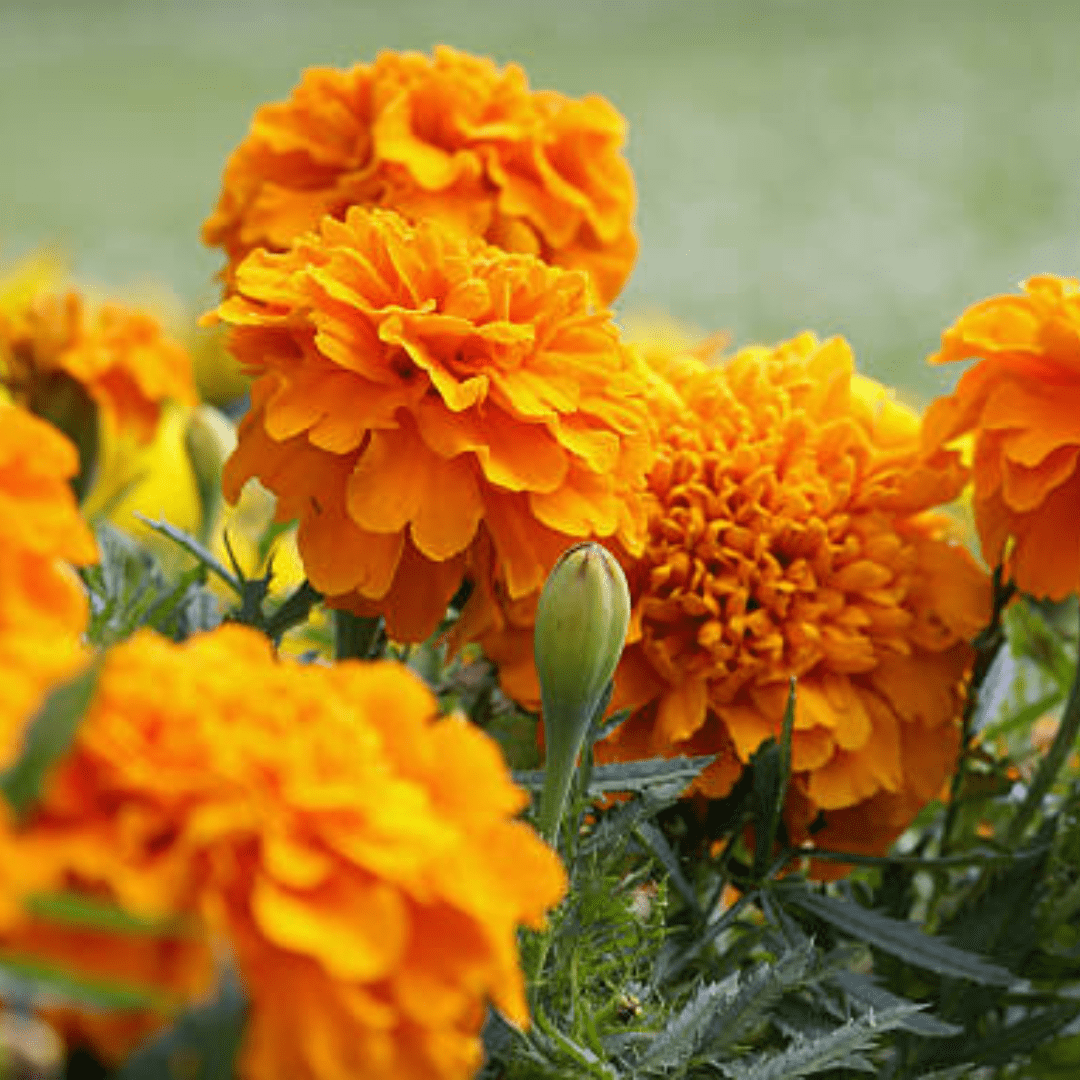Marigolds are more than just cheerful flowers—they’re a natural ally for your vegetable garden. When planted alongside tomatoes, peppers, beans, and other crops, marigolds help repel harmful pests like nematodes, aphids, and whiteflies, reducing the need for chemical pesticides. Their strong scent confuses insects, while certain varieties even release compounds from their roots that protect nearby plants. Growing marigolds as pest control is simple, effective, and a sustainable way to keep your garden healthy while adding vibrant color to your beds.
If you’re looking for a simple, natural way to protect your vegetable garden from pests, marigolds are your new best friend. These vibrant, easy-to-grow flowers don’t just add a splash of color—they act as a powerful deterrent against common garden pests like nematodes, aphids, and whiteflies. By strategically planting marigolds among your vegetables, you can reduce chemical use, boost garden health, and even attract beneficial insects that support pollination. In this guide, I’ll walk you through everything you need to know to grow marigolds effectively as a natural pest control solution.
This is a pinnable post. Tap or hover over any image in this post to pin to your Pinterest Boards.
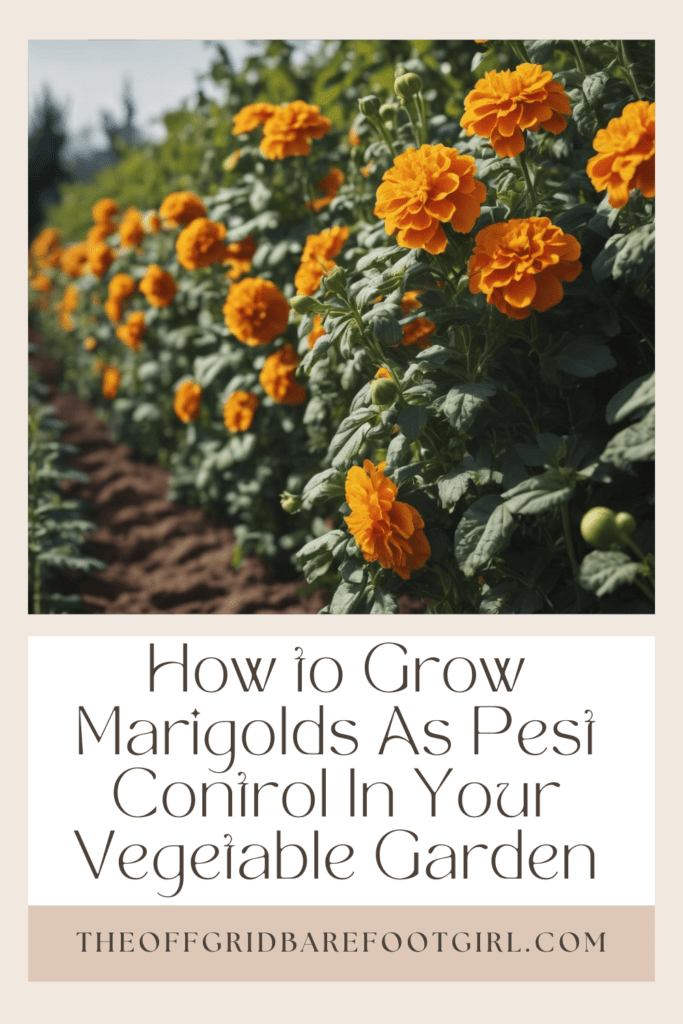
Introduction to Using Marigolds as Pest Control In the Vegetable Garden
Are pests wreaking havoc in your vegetable garden? Look no further than a cheerful, vibrant flower to help save the day – the marigold! These beautiful blooms not only add a burst of color to your garden but also serve as natural pest control. In this article, I’ll explore the benefits of using marigolds for pest control and delve into the intriguing world of marigolds’ natural pest-repellent properties.
Benefits of Using Marigolds for Pest Control
Why use toxic pesticides when you can harness the power of marigolds? These flowers offer a safe and environmentally friendly alternative to keep pests at bay. By incorporating marigolds into your vegetable garden, you can effectively reduce the need for chemical interventions. Plus, who can resist their charming golden and orange hues brightening up your garden beds?
Overview of Marigolds’ Natural Pest-Repellent Properties
It’s not just their striking appearance that makes marigolds a superhero in the garden. These flowers have natural pest-repellent properties that can keep unwanted critters at a distance. Research suggests that marigolds emit a scent that repels pests like aphids, nematodes, and even rabbits. It’s like having a tiny, fragrant security guard protecting your precious vegetables!
Selecting the Right Marigold Varieties for Pest Control
When it comes to choosing marigolds for pest control, not all varieties are created equal. Understanding the different types of marigold varieties can help you select the best ones for your garden. Let’s dive into the world of marigold varieties and discover which ones are most effective against specific pests.
Understanding the Different Types of Marigold Varieties
Marigolds come in various shapes, sizes, and colors – from compact French marigolds to taller African marigolds. Each type has its own unique characteristics and pest-repelling abilities. By familiarizing yourself with the different types, you can find the perfect match for your garden’s needs.
Choosing Marigold Varieties That Are Most Effective Against Specific Pests
Different pests require different deterrents, and marigolds have got you covered. For instance, French marigolds are particularly effective against aphids, while African marigolds may help keep nematodes at bay. By selecting the right marigold varieties, you can create a customized defense system to combat specific garden pests. However, I like to plant both of these varieties in my garden for maximum protection in all areas of my garden!
Planting Marigolds Strategically for Maximum Pest Deterrent Effect
Now that you’ve chosen the marigold varieties that suit your pest control needs, it’s time to strategize their placement in the garden. To maximize their pest deterrent effect, I’ll explore key areas for marigold planting and uncover the secrets of companion planting with vegetables.
Identifying Key Areas In the Vegetable Garden for Marigold Placement
Marigolds work best when strategically positioned in the garden. Areas prone to pest infestations or alongside vulnerable vegetables are great places to plant these superhero flowers. By identifying key areas, you can create a barrier that pests dare not cross!
Companion Planting: Pairing Marigolds with Vegetables for Pest Control Synergy
Marigolds not only defend themselves, but also make great companions for other vegetables. The concept of companion planting involves strategically pairing plants that benefit each other. By intermingling marigolds with your vegetables, you can achieve pest control synergy and create a harmonious, pest-free environment in your garden.
Companion Planting
Companion planting involves strategically placing plants in proximity to enhance each other’s growth or protect against pests. Marigolds are commonly used as companion plants in vegetable gardens due to their pest-repelling properties. Here are some vegetable plants that pair well with marigolds:
- Tomatoes: Marigolds help deter nematodes and protect tomatoes from certain pests.
- Cucumbers: Marigolds can repel pests like aphids and cucumber beetles that affect cucumber plants.
- Squash and Zucchini: Marigolds help deter squash bugs and other pests that commonly affect these plants.
- Melons: Similar to cucumbers, melons benefit from marigolds’ ability to repel insects and nematodes.
- Carrots: Marigolds may help deter carrot flies, protecting the carrot crop.
- Radishes: Marigolds can help protect radishes from pests like flea beetles.
- Potatoes: Marigolds are known to repel Colorado potato beetles, which can be harmful to potato plants.
- Brassicas (Broccoli, Cabbage, Cauliflower): Marigolds can help deter cabbage worms and other pests that commonly affect brassica crops.
- Peppers: Marigolds may help protect pepper plants from nematodes and certain insect pests.
- Beans: Marigolds can repel beetles and other pests that may harm bean plants.
When companion planting with marigolds, it’s essential to choose the right marigold varieties. French marigolds (Tagetes patula) and African marigolds (Tagetes erecta) are commonly used for this purpose. Additionally, interspersing marigolds throughout the vegetable garden or planting them as borders can provide a beneficial effect, which is my favorite way to plant them! I love sprinkling marigolds all over my garden!
Keep in mind that while marigolds can offer pest protection, they are not a cure-all, and other gardening practices like crop rotation and proper garden hygiene are also important for overall plant health.
For other natural ways to protect your garden from pests, consider visiting my other posts:
- How to Release Ladybugs In Your Garden for Organic Pest Control
- The Best Garden Snail Control Strategies
- How to Do Companion Planting: Friends or Foes?
Understanding the Science Behind Marigolds’ Pest-Repellent Properties
Ever wondered what makes marigolds such efficient pest repellents? In this section, I’ll dive into the fascinating world of the science behind marigolds’ pest-repellent properties and explore research studies that shed light on their effectiveness. For the more nerdy side of us gardeners, let’s check out the scientific studies.
Exploring the Chemical Compounds In Marigolds That Repel Pests
Marigolds produce chemical compounds such as thiophenes and limonoids that have been found to repel pests. These compounds are believed to interfere with the pests’ sensory systems, making them less likely to invade your garden. It’s nature’s way of saying, “Stay away, pests!”
Here are some key chemical compounds found in marigolds:
- Sesquiterpene Lactones: These are the main group of compounds responsible for the distinctive aroma of marigolds. Some specific sesquiterpene lactones found in marigolds include tagetones and thiophenes.
- Alpha-Terthienyl: This compound is found in Tagetes erecta (African marigold) and has been studied for its pesticidal properties, particularly against nematodes.
- Beta-Caryophyllene: A common terpene found in many plants, including marigolds. It is known for its insect-repelling properties.
- Tagetone: A specific sesquiterpene found in marigolds that contributes to their characteristic scent and may have insect-repelling effects.
- Thiophenes: These sulfur-containing compounds contribute to the distinctive smell of marigolds and may have insecticidal properties.
Specific Compositions of These Compounds Can Vary Among Varieties
It’s important to note that the specific composition of these compounds can vary among different marigold species and varieties. While marigolds are known for their ability to repel certain pests, their effectiveness may vary depending on factors such as the type of pest and the environmental conditions.
It’s also worth mentioning that the science behind companion planting and pest-repelling properties of plants, including marigolds, is an area of ongoing research, and not all mechanisms are fully understood. Gardeners often rely on a combination of strategies, including companion planting, to promote a healthy and pest-resistant garden. Learn more about companion planting in my other article. How to Do Companion Planting: Friends or Foes?
Research Studies On the Effectiveness of Marigolds As Pest Control
Curious minds rejoice! Numerous studies have been conducted to evaluate the real-world effectiveness of marigolds as a pest control measure. I’ll delve into research findings that confirm marigolds’ ability to reduce pest populations and offer insights into how to optimize their use in your vegetable garden.
While marigolds are commonly believed to have pest-repelling properties, it’s essential to note that the scientific evidence regarding their effectiveness as a standalone pest control method is somewhat limited, and results can vary based on the specific pest and environmental conditions. Here are a couple of research studies that have explored the potential pest control benefits of marigolds:
Research Studies of the Effects of Marigolds In the Garden!
- Study Title: “Effects of Tagetes patula (Asteraceae) on nematode communities in three cultivars of Chrysanthemum morifolium (Asteraceae)”
Authors: G. Elberse, M. Korthals, J. Van Rozen
Published in: Journal of Nematology (1993)
Summary: This study investigated the effects of French marigold (Tagetes patula) on nematode populations in the soil. The researchers found that certain compounds produced by marigolds had a nematode-suppressive effect. However, the study focused on nematodes and not necessarily on insect pests.
- Study Title: “Effect of Tagetes erecta and Fagopyrum esculentum on the biological and behavioral activities of the sweet potato whitefly, Bemisia tabaci (Hemiptera: Aleyrodidae)”
Authors: A. R. Horowitz, S. Gabbay, S. Ishaaya
Published in: Phytoparasitica (2003)
Summary: This study examined the impact of African marigold (Tagetes erecta) on the sweet potato whitefly (Bemisia tabaci), a common pest in many crops. The researchers found that certain extracts from marigolds had insecticidal effects on whiteflies and also affected their behavior.
While these studies suggest the potential benefits of marigolds in pest control, it’s crucial to interpret their findings within the context of specific pests and conditions. Many gardeners use marigolds as part of a broader integrated pest management strategy, combining various methods for effective pest control. Additionally, ongoing research may provide further insights into the mechanisms and effectiveness of marigolds in pest management.
For the latest research studies, you may want to search academic databases or journals related to entomology, pest management, or horticulture. That is what I have done. I guess I was missing my college days!
Maintaining and Caring for Marigolds In the Vegetable Garden
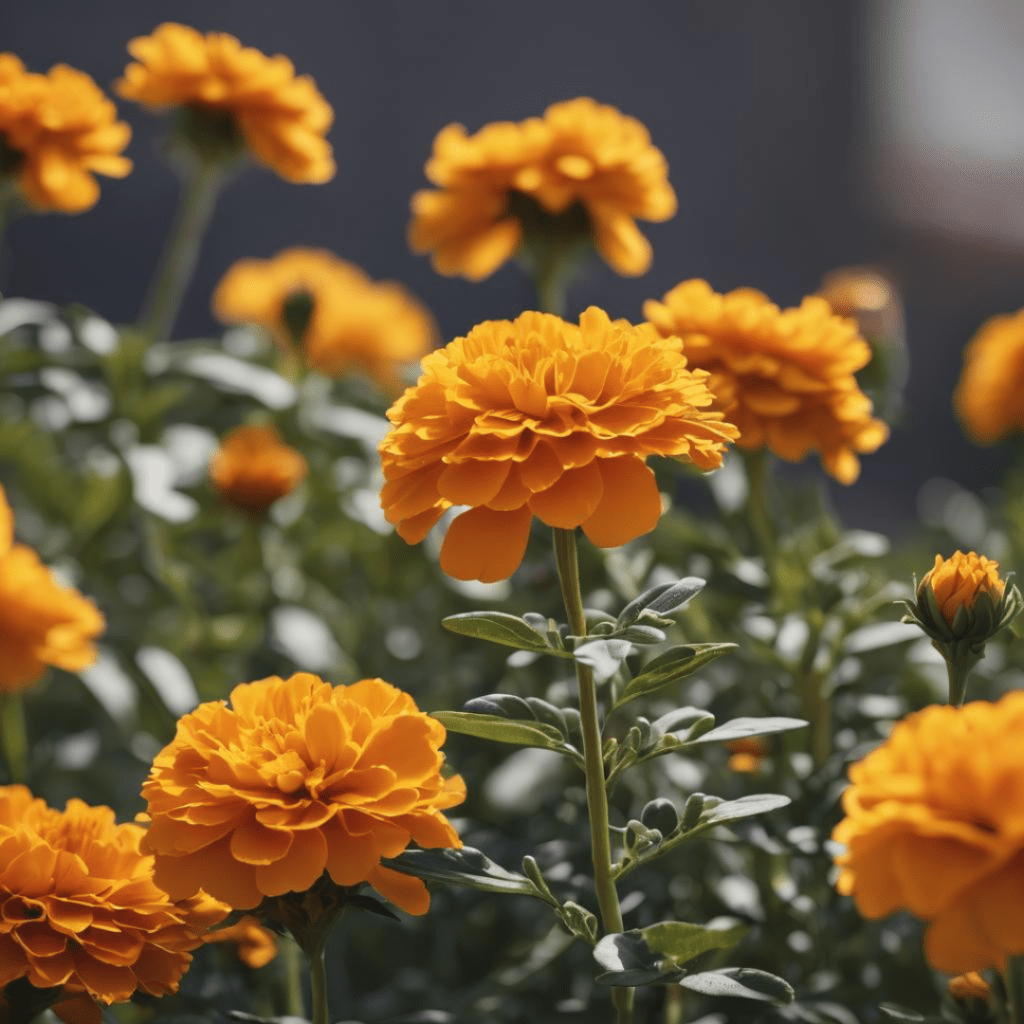
Proper Watering Techniques for Marigolds
When it comes to watering marigolds, it’s important to find the right balance. These vibrant beauties prefer moist, but well-drained soil. Overwatering can lead to root rot, while underwatering can stunt their growth. Aim to keep the soil consistently moist, but not soaking wet. Water deeply and thoroughly, allowing the top inch of soil to dry out between waterings.
Fertilizing Marigolds for Healthy Growth and Pest Resistance
Marigolds are generally low-maintenance plants, but a bit of fertilizer can go a long way in ensuring their health and pest resistance. Use a balanced, slow-release fertilizer when planting, and apply a water-soluble fertilizer every four to six weeks during the growing season. This will provide the necessary nutrients for robust growth and help ward off pesky invaders.
Managing Common Diseases and Pests That Affect Marigolds
Marigolds are known for their natural pest-repellent properties, but that doesn’t mean they are completely immune to their own problems. Keep an eye out for common diseases such as powdery mildew or fungal infections. To prevent these issues, ensure proper air circulation by spacing the plants adequately and avoiding overhead watering. If pests like aphids or spider mites become a nuisance, try spraying the plants with a mixture of water and mild dish soap to deter them. While marigolds are busy protecting the garden, sometimes they like to know we have their backs, too! Here is how to combat the powdery mildew if you find evidence in your garden.
How to Effectively Combat Powdery Mildew in Your Garden
Integrating Marigolds with Other Pest Control Methods for a Comprehensive Approach
Combining Marigolds with Organic Pest Control Techniques
While marigolds do a fantastic job at repelling certain pests, it’s always good to have a backup plan. Consider using organic pest control methods, such as introducing beneficial insects like ladybugs or using neem oil sprays, in conjunction with marigolds. This comprehensive approach will create a hostile environment for pests and keep your vegetable garden thriving. I wrote a guide on how to effectively release ladybugs in your garden!
How to Release Ladybugs In Your Garden for Organic Pest Control
Using Marigolds Alongside Physical Barriers for Pest Prevention
Marigolds can act as the first line of defense against pests, but physical barriers can offer an extra layer of protection. Erecting simple barriers like fencing or creating raised beds can help deter larger pests like rabbits or deer from feasting on your vegetable garden. By combining the natural pest-repellent properties of marigolds with physical barriers, you’ll have a formidable defense system.
Harvesting and Utilizing Marigolds for Pest Control Purposes
Tips for Harvesting Marigold Flowers and Leaves
When it’s time to harvest your marigolds, pluck the fully bloomed flowers and remove any damaged or wilted ones. Gently pinch the stem close to the base to avoid leaving stubs. For the leaves, choose the healthiest and most vibrant ones to use in pest control applications.
Methods of Processing Marigolds for Pest Control Applications
There are various ways to utilize marigolds for pest control. You can dry the flowers and leaves, then crush them into a powder to create a natural insect repellent. Another method is to steep the flowers and leaves in water to make a potent spray. Strain the mixture and use it to treat affected plants or as a preventive measure in your vegetable garden. Get creative and experiment with different techniques to find what works best for you.
Save Marigold Seeds for Endless Blooms
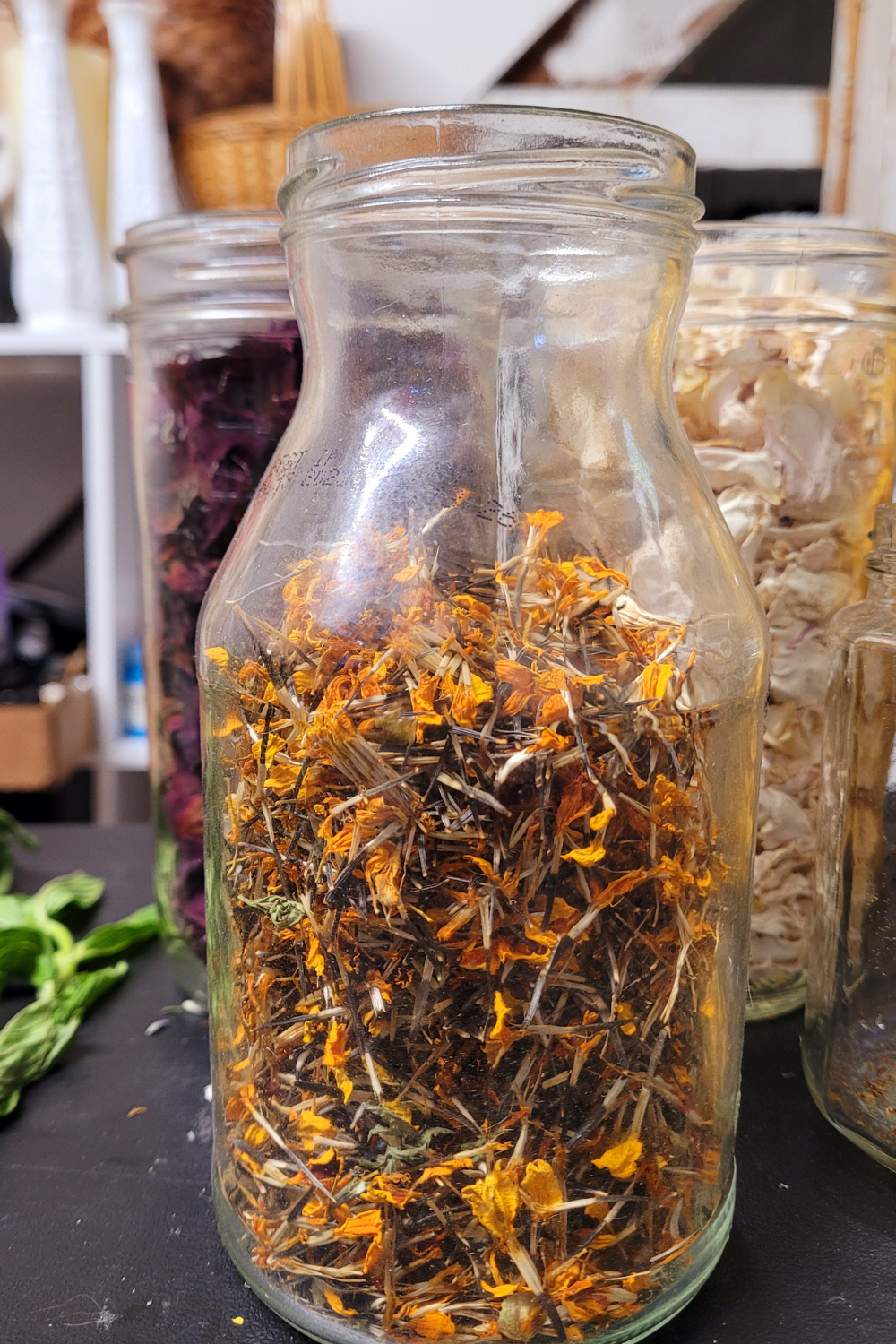
One of the best things about marigolds is how easy they are to grow and propagate. Once your flowers have bloomed and the petals begin to dry, they produce an abundance of seeds that can be collected at the end of the season. Simply let the flower heads fully dry on the plant, then gently remove the seeds and store them in a cool, dry place. By doing this, you can ensure a ready supply of marigolds for your garden year after year without ever having to purchase new plants.
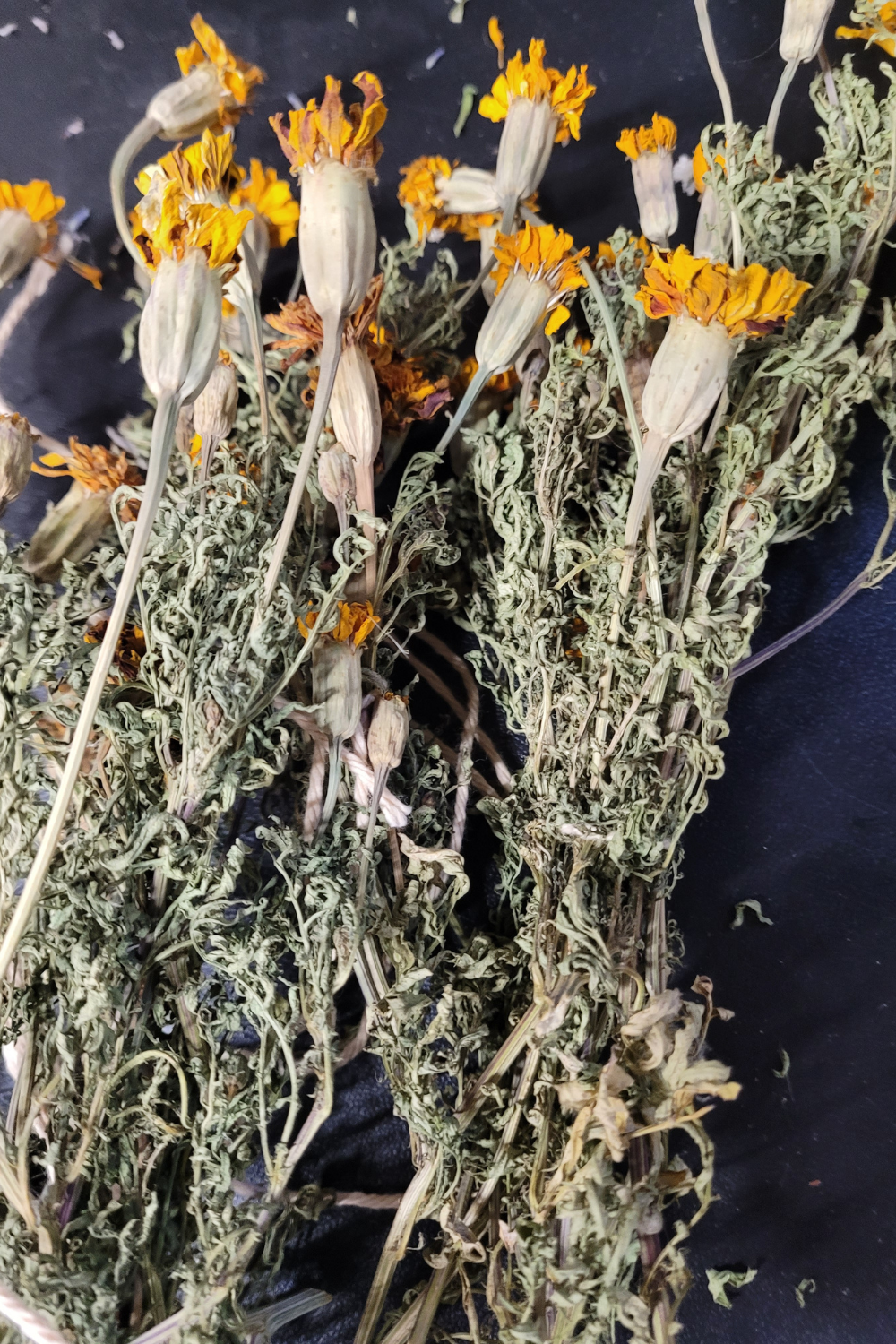
Saving seeds not only saves money but also allows you to grow varieties that thrive in your specific garden conditions. Marigolds are prolific seed producers, so even a few plants can provide enough seeds to fill your entire garden next season. Over time, saving and planting your own seeds encourages stronger, more resilient plants adapted to your garden’s climate and soil, making your vegetable garden more sustainable and colorful with minimal effort.
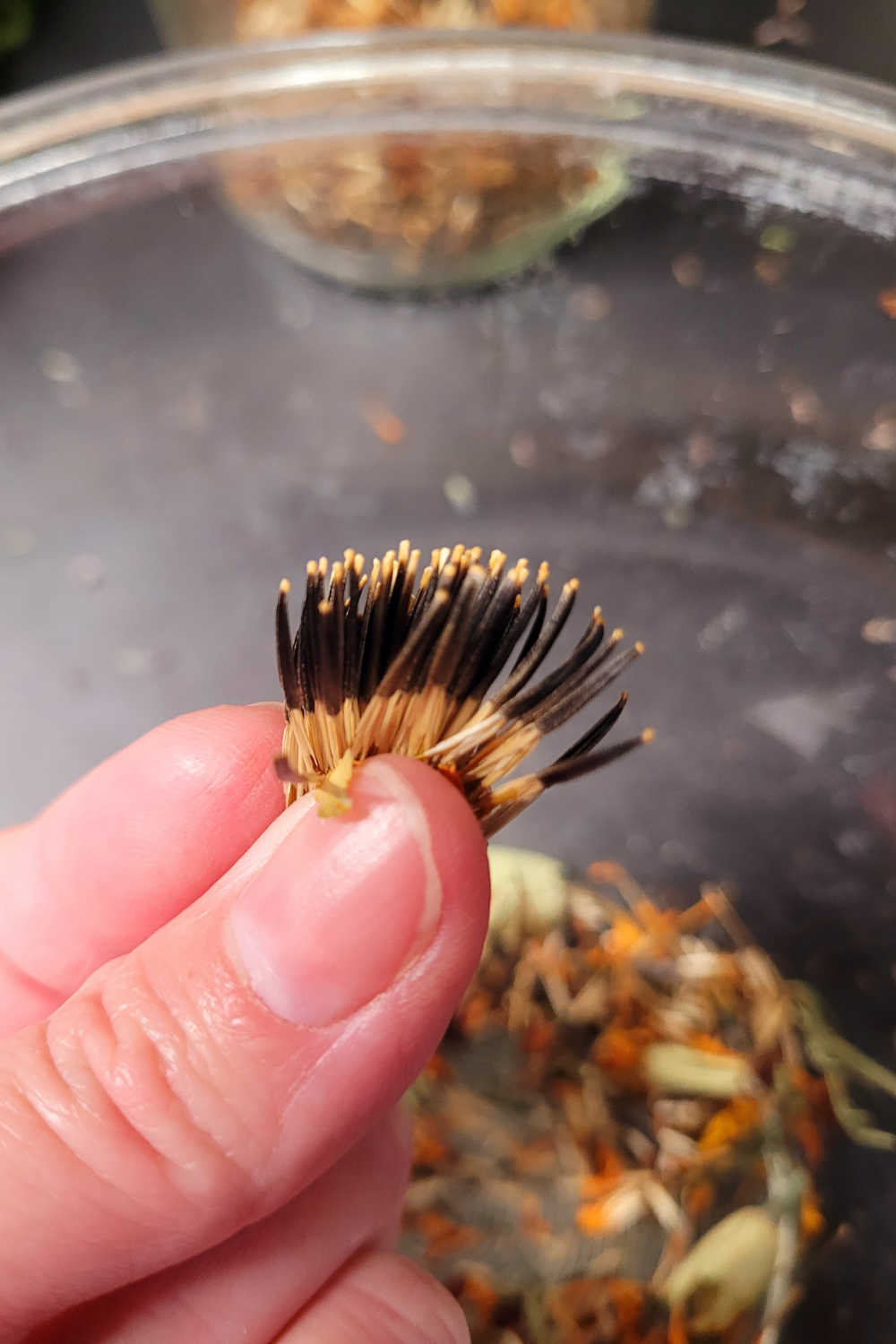
Troubleshooting Common Challenges When Growing Marigolds for Pest Control
Dealing With Issues Like Poor Germination or Stunted Growth
If you’re facing problems like poor germination or stunted growth, there are a few possible reasons. Make sure you’re planting marigold seeds in well-draining soil and not burying them too deeply. Provide adequate sunlight and maintain the proper temperature for germination. Additionally, consider using fresh seeds as older ones may have reduced viability.
Addressing Pest Problems That May Still Arise Despite Marigold Presence
While marigolds are fantastic at repelling many pests, they may not deter every single one. In case you still encounter pest issues, don’t lose hope. Employ other organic pest control methods like handpicking or using insecticidal soaps. Remember, even the best pest control measures can sometimes falter, but with a bit of perseverance, you’ll find the right solutions for your garden.
Conclusion
In conclusion, marigolds offer a simple and effective solution for pest control in your vegetable garden. By harnessing their natural repellent properties and strategically planting them, you can create a pest-resistant environment that promotes the health and productivity of your vegetable plants. From repelling insects to deterring harmful nematodes, marigolds provide a natural and environmentally friendly alternative to chemical pesticides. So, why not give marigolds a try in your garden and enjoy the benefits of both pest control and their vibrant beauty? Happy gardening!
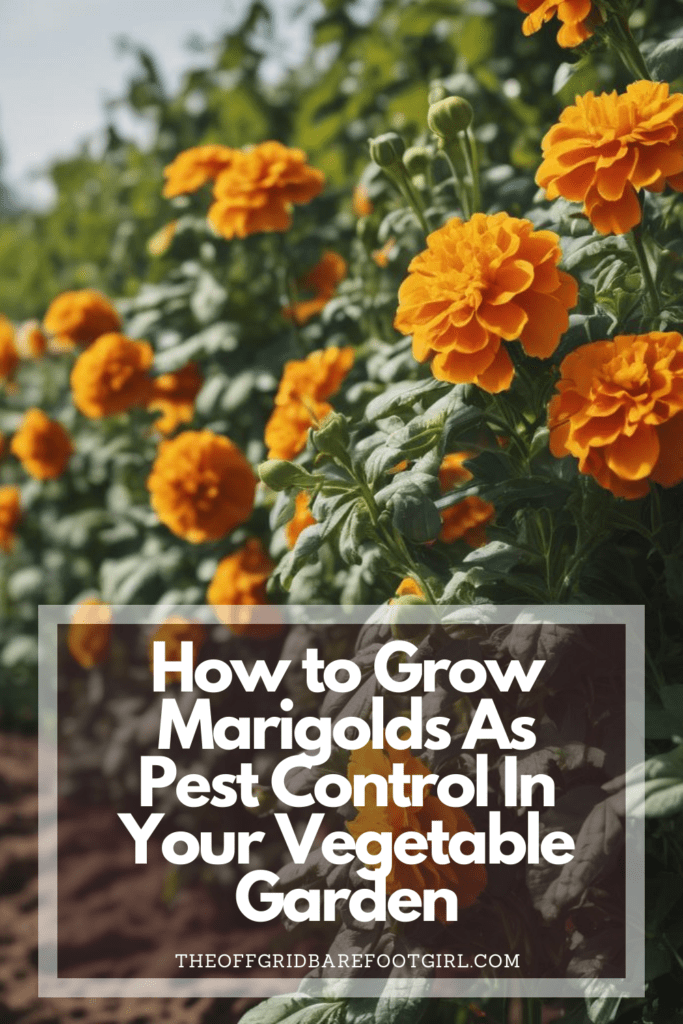
Frequently Asked Questions
1. Can I use any type of marigold for pest control in my vegetable garden?
Yes, you can use various types of marigolds for pest control. However, some varieties, such as French marigolds (Tagetes patula) and African marigolds (Tagetes erecta), are known to be more effective in repelling pests. It is recommended to choose marigold varieties that are specifically bred for their pest-repellent properties.
2. How do marigolds repel pests?
Marigolds contain natural chemical compounds, such as limonene and alpha-terthienyl, which act as repellents against many common garden pests. These compounds interfere with the pests’ ability to locate and feed on host plants. Additionally, marigolds emit a strong scent that can mask the attractive smells of other plants, making it confusing for pests to find their preferred targets.
3. Can marigolds completely eliminate all pests in my vegetable garden?
While marigolds are effective in deterring many pests, they may not completely eliminate all pest problems in your vegetable garden. They are most effective against insects like aphids, nematodes, and certain beetles. However, some pests may still find their way to your garden. It’s recommended to combine marigold planting with other organic pest control methods and maintain good gardening practices for comprehensive pest management.
4. Can I save seeds from my marigold plants for future planting?
Yes, you can save seeds from marigold plants to use in future plantings. Allow the flowers to dry completely on the plant, then collect the seeds from the dried flower heads. Store the seeds in a cool, dry place in an airtight container until you are ready to plant them in the next growing season. Keep in mind that hybrid marigold varieties may not produce true-to-type offspring from saved seeds, so it’s best to use open-pollinated or heirloom varieties for seed-saving purposes.
Summary
I hope I have inspired you to grow marigolds as pest control in your garden with these tips and products.
If you were encouraged by this post, I invite you to check out my FREE Printables Page for fun free printables, planners, and charts.
ENTER MY FREE Printables Page HERE
Here are some more of my gardening inspiration posts to check out!
Must-Have Tools for a Successful Balcony Vegetable Garden
How to Effectively Combat Powdery Mildew in Your Garden
The Best Tips for Organic Gardening
How to Release Ladybugs In Your Garden for Organic Pest Control
The Best Garden Snail Control Strategies
The Best Spring Vegetables to Grow in Your Garden
Seed Starter Mix: How To Make Your Organic Seed Starter Mix At Home
How to Grow a Productive Canning Garden
How to Plant and Grow a Salsa Garden
Easiest Heirloom Vegetable Seeds to Grow Now
How to Use the Hand Twist Claw Tiller: Tackling Tough Soil
Planning Your Garden: How to Plan a Vegetable Garden: Expert Green Thumb Tips!
Winterizing the Garden: How to Winterize Your Vegetable Garden: Step-by-Step Checklist
Mulching the Garden: How to Make Leaf Litter Mulch
Grow a Pumpkin Patch: How to Grow a Pumpkin Patch in Your Backyard
How to Win a Giant Pumpkin Contest
How to Grow a Fall Garden: 9 Best Fall Crops
Clever Ways to Incorporate Indoor Composting into Your Home
How to Start Composting for the Garden: A Step-by-Step Guide
The Ultimate Guide to Composting in Your Suburban Backyard
Why I Built A Survival Garden in My Backyard
How to Grow A Foodscape Garden From Scratch
16 Best Medicinal Herbs to Grow in Your Garden Now
Blessings,
The Off Grid Barefoot Girl

